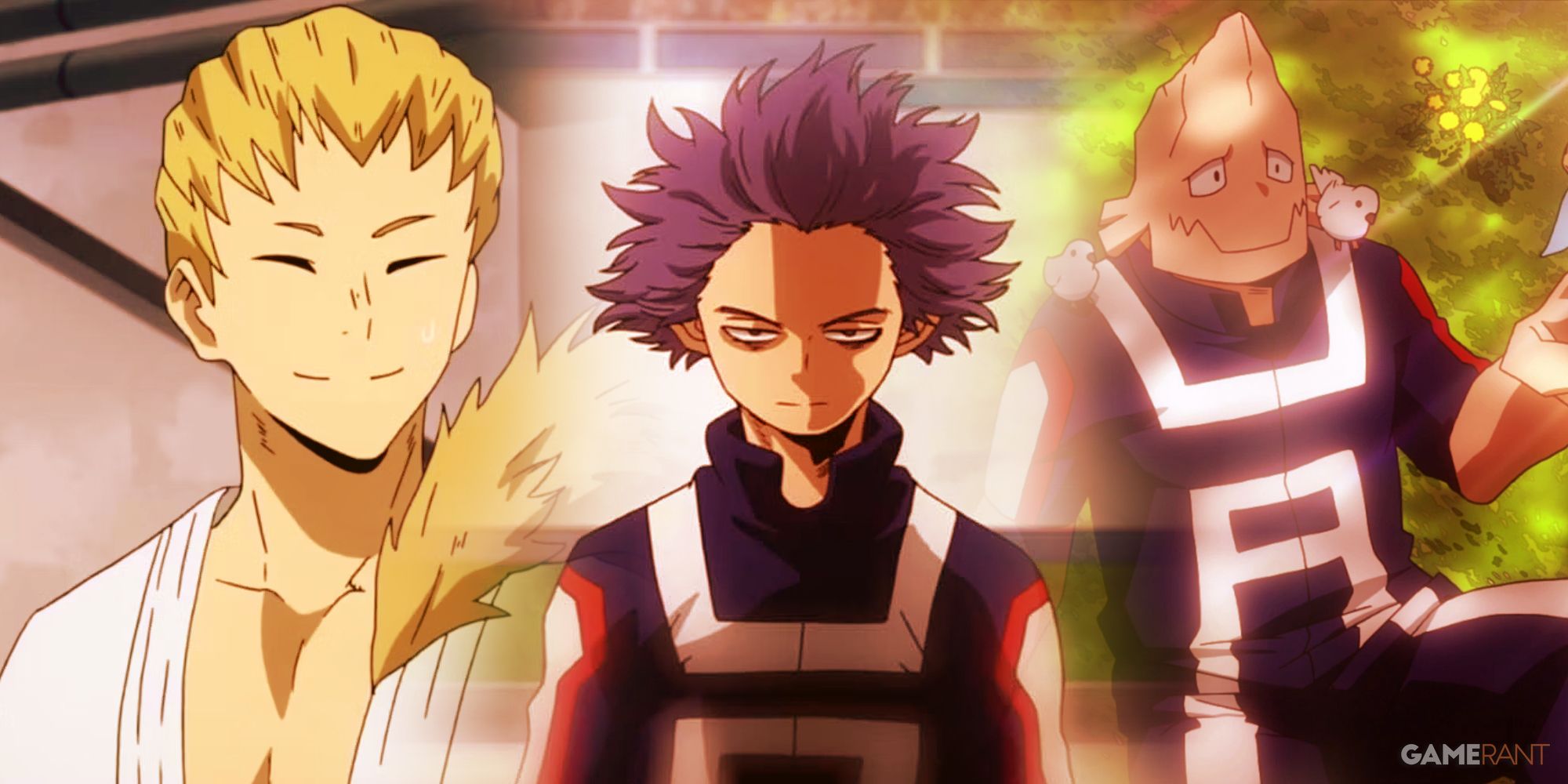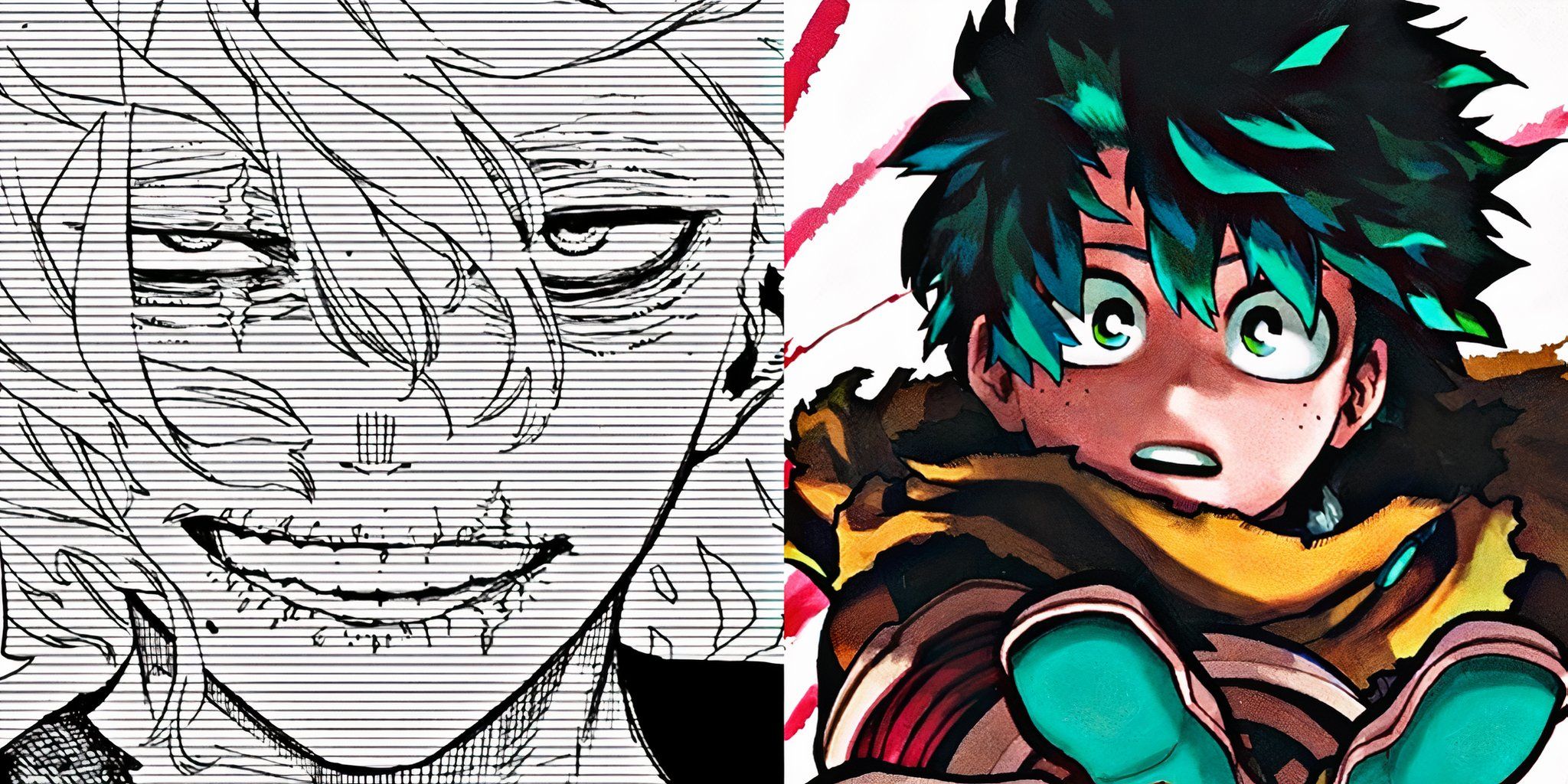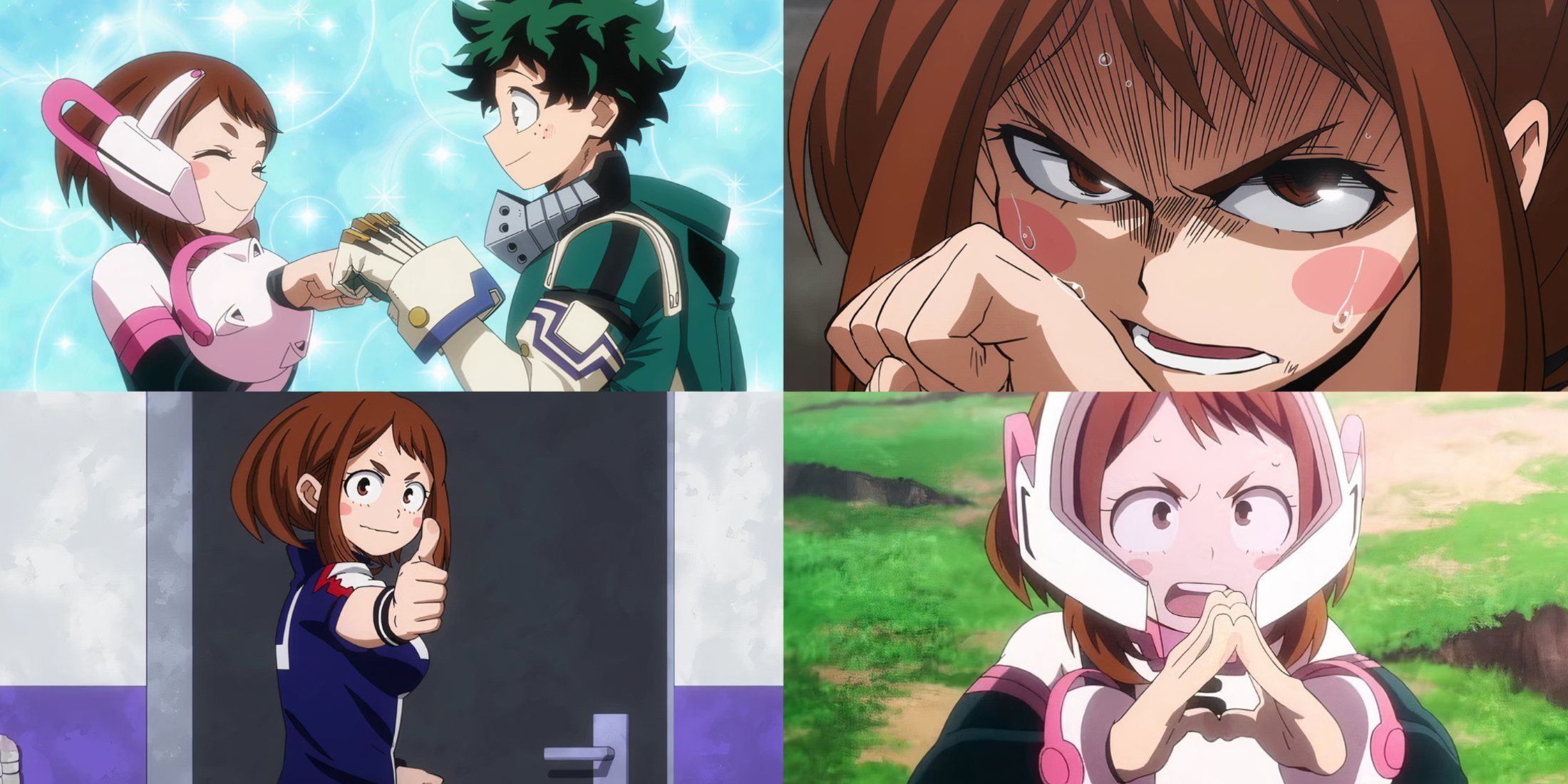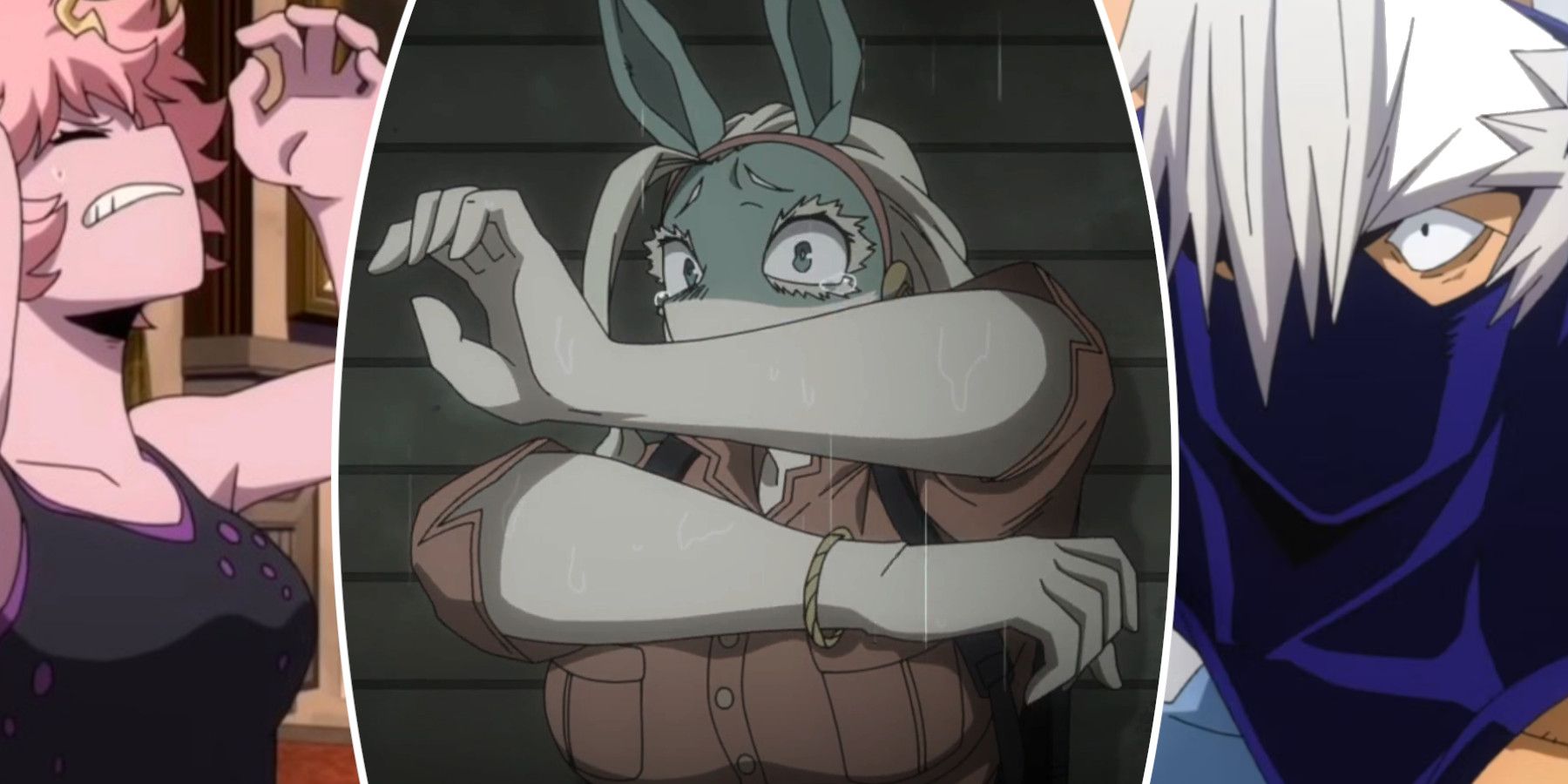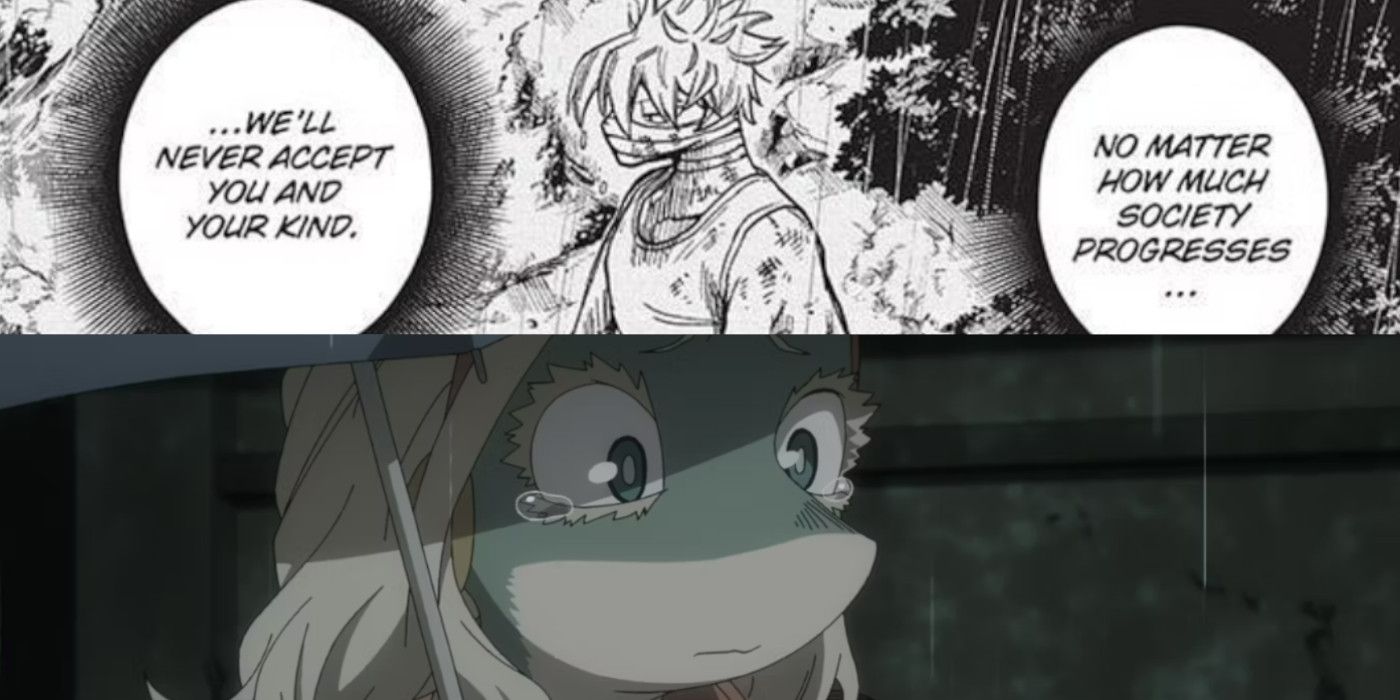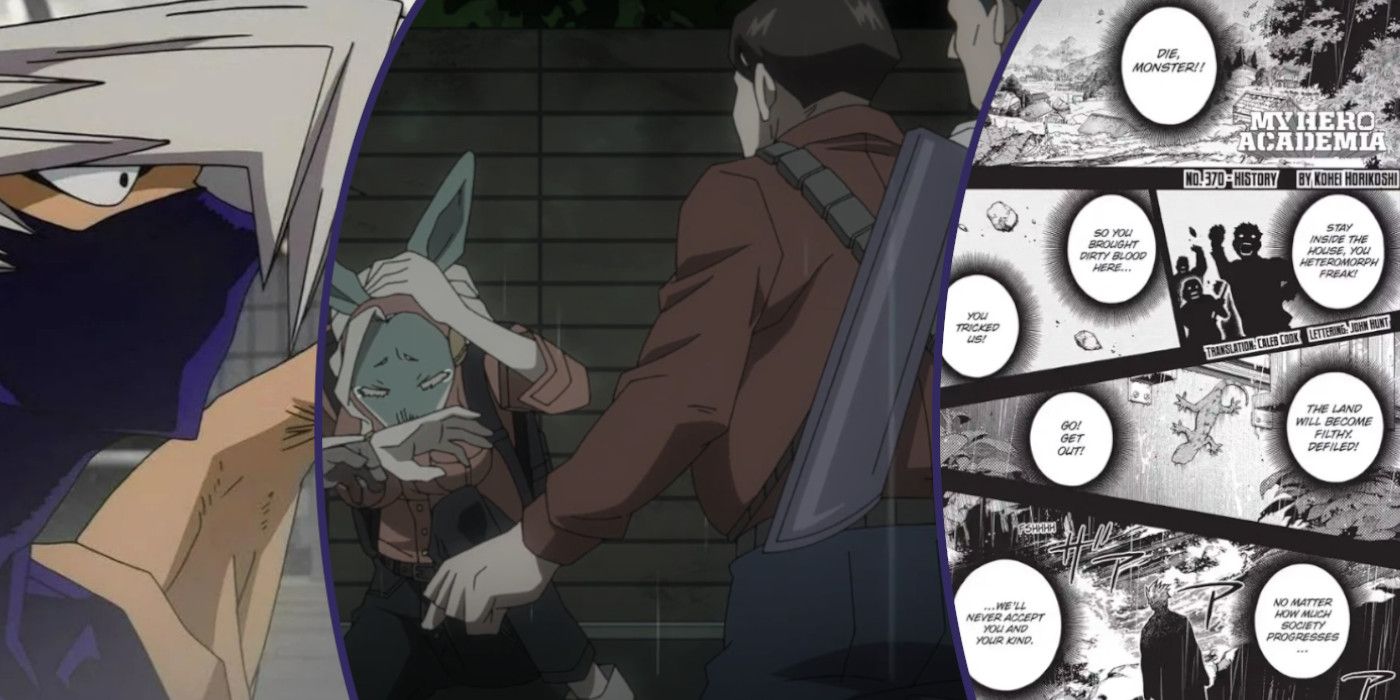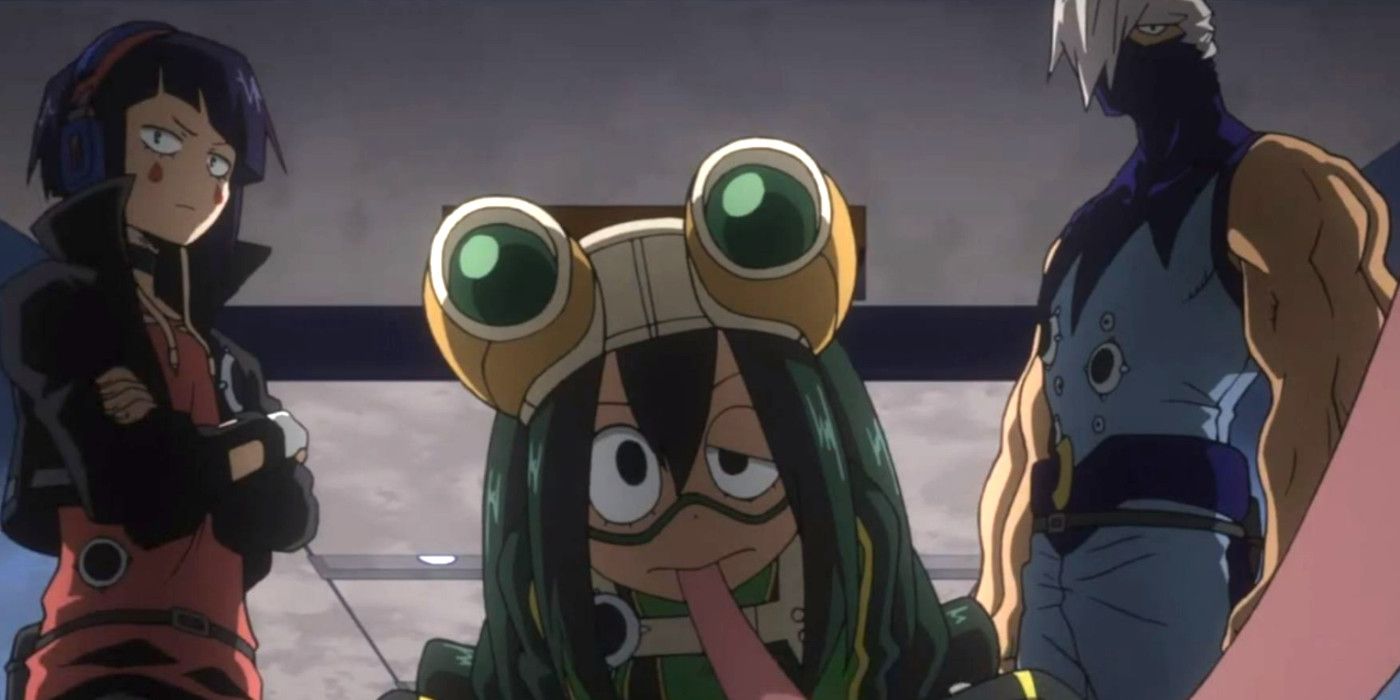The following content will contain light spoilers from My Hero Academia, Season 6, episode 24, and Chapter 370 of the manga. The innocent woman who was hunted as a potential villain in Season 6, episode 20 of My Hero Academia makes a comeback in episode 24, with some truly astounding news. Even though All Might supposedly escorts her to an evacuation shelter, this "Ordinary Woman" or Ippan Josei (as she has been dubbed) battled to find safety, as almost all the emergency safehouses turned her away simply because she is a heteromorph.
This striking damsel-in-distress was intentionally designed to leave a long-lasting impression as "the cutest darn ordinary woman in the history of My Hero Academia;" but even her amped-up adorable factor couldn't save her from bigotry. Sadly, she is but one of many who face daily discrimination based on appearances only, and this small-mindedness is destroying Hero Society, from the inside out.
The Heteromorph's Harrowing History
The term "heteromorph" and "mutant" are virtually interchangeable, whereby one's Quirk alters their genetic structure so extensively that their human characteristics become almost unrecognizable. Specific statistics regarding what percentage of the population is born with heteromorphic features are unclear; however, from just scanning the crowds in My Hero Academia, it is evidently not a very uncommon trait, with many presenting some kind of physical mutation. Nevertheless, the heteromorphs' distinctive differences have still resulted in segregation and intolerance, where they are treated as the scum of the earth and villainized by society.
This unique form of racism is apparently nothing to be ashamed of, even if the children are the victims, as it seems to be widely accepted that heteromorphs are the inferior species (although to be fair, this warped idealogy is generally more predominant in small towns and outlying villages.) Unfortunately, as Ippan Josei learned the hard way, the prejudice is still active in the main cities of Japan, as only UA were willing to open their doors to her and save her life.
The Ongoing Discrimination
Even though Quirks (and therefore, assumedly heteromorphs) have been around for over a century, mutant discrimination still persists today, as some of the current Heroes have had first-hand experience with this biased treatment. Tsuyu Asui and Habuko Mongoose, for example, were ostracised by their peers and struggled to make friends, which was a very lonely introduction to the schooling system. Even Hawks' magnificent wings caused him trouble, provoking his father to violently lash out at him as punishment for being so conspicuous. Mashirao Ojiro seems to feel the need to overcompensate for his prominent Quirk, and even though he mightn't have received much hatred for his appearance, he is clearly very self-conscious about standing out from the "norm." And these are just a few of the heteromorphs who have been highlighted in the storyline, who knows what else is going on behind the scenes?
Mezo Shoji stems from a small (-minded) rural village and has arguably paid the highest price for his heteromorph traits, out of Class A, at least. In his hometown, residents would rally around those born with "dirty blood" and proceeded to beat and torture anyone who showed signs of impurity, regardless of the victim's age. Shojo still has the scars to prove the extensive abuse he endured in his youth, from when fear and hatred were all he knew. And even though UA has wholeheartedly accepted Shoji for who he is, the traumatized boy still hides behind a mask to this day and has subsequently formed a love-hate relationship with his Quirk (what he sees as the root of his problems.)
Shoji refused to allow hatred and vengeance to consume him and is lucky enough to be viewed as a potential Hero by UA High School; however, not all are as fortunate. Spinner's scaley features also landed him a spot on the discrimination hit list, and he has been criticized and condemned for most of his life, despite his rather good-natured demeanor. As a result, Shuichi Iguchi isolates himself from the world and escapes reality by gaming, becoming a mere shell of himself in the process. Eventually, the Hero Killer Stain sparks this youngster's desire to find a purpose; unfortunately, in some cases, justice and revenge are indistinguishable. Siding with the League of Villains, Spinner's main goal is to exterminate heteromorph hatred from society, but sadly he applies more force than tact to his message delivery.
A Non-fictional Foundation
Discrimination based on physiognomy is not a new concept for humanity, and, unfortunately, even after all these years of unnecessary conflict, the lesson has not yet been driven home. Thankfully, My Hero Academia's youngsters don't appear to hold the same sentiments as the older generations, as the students don't seem preoccupied with this "mutant-ism," apart from being appalled that it ever occurs. One of the most popular kids in the show is barely humanoid, and yet nobody who knows Mina Ashido could say a bad word about her. The same could be said for Shoji, who suffered extensively at the hands of grown-ups but finds nothing but love and acceptance from his classmates (well, maybe not Bakugo on the love part, but even the temperamental egotist doesn't hate on heteromorphs!) In fact, none of the UA students are stigmatized based on their physical characteristics; personality and potential are what matters here!
Martin Luthur King Jr. eloquently stated that:
“injustice anywhere is a threat to justice everywhere,”
and it is so ironic that the citizens are so quick to berate their Heroes for their villainous connections, while unashamedly following through with their own immoral code of hostility. And to that, Raven/Mystique's iconic statement "mutant and proud," is the perfect response because once heteromorphs are accepted as equal members of society, they can walk tall as a collective group for the first time in My Hero Academia.
The ongoing intolerance against heteromorphs could also be dropping subtle hints about the Japanese culture which, overall, does not encourage individualism. Not to say that Japan is a racist state that discriminates against diversity, but rather that its social structures prioritize uniformity and harmony over uniqueness. This has arguably worked well for the country overall, yet, some may feel stifled by societal expectations, which could be viewed as rather strict.
The iconic Japanese-American YouTube and TikTok content creator, Cyber Bunny, emphasizes the rules and restrictions in place in Japan that prohibit her from feeling free to be herself in public, while simultaneously showing a deep appreciation for her rich heritage. So while these social norms are certainly not as severe as the harsh treatment dishes out to heteromorphs, feeling excluded based on one's appearance is not an uncommon thread in both the fictional and contemporary Japanese settings.

